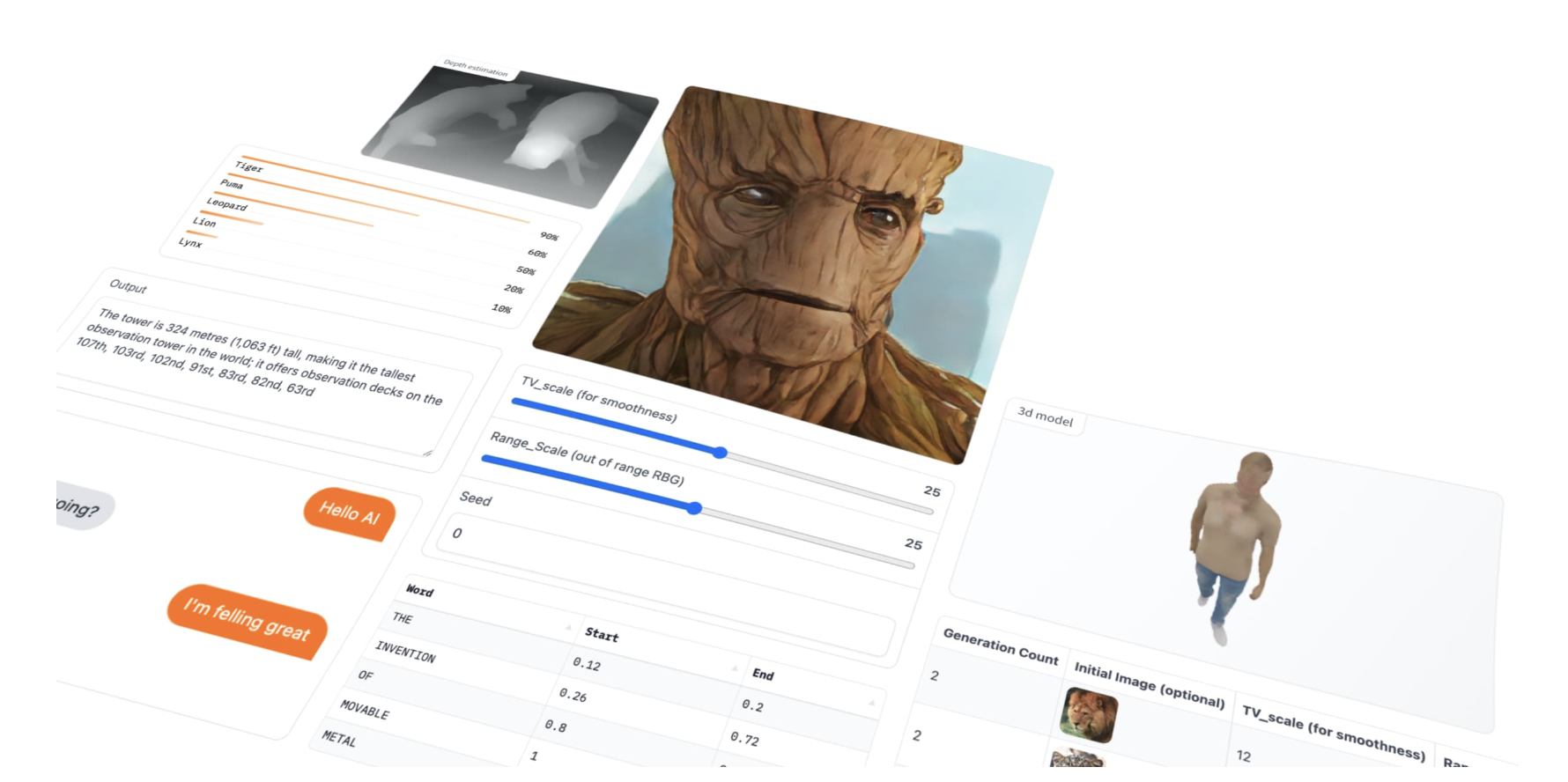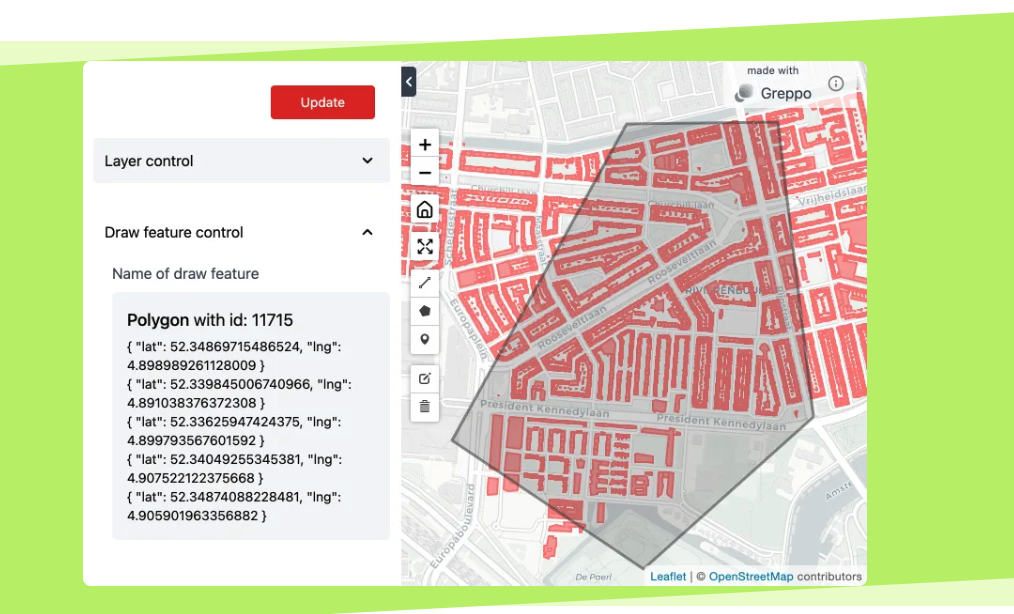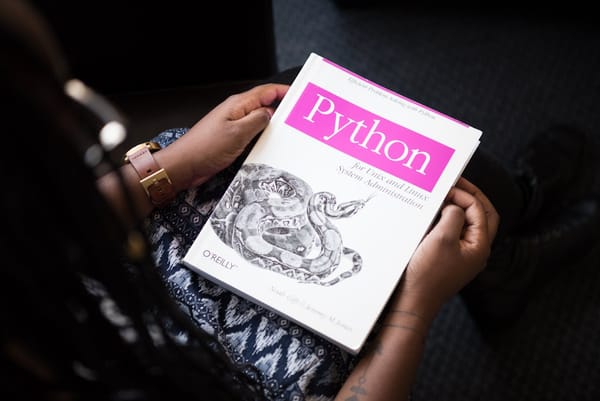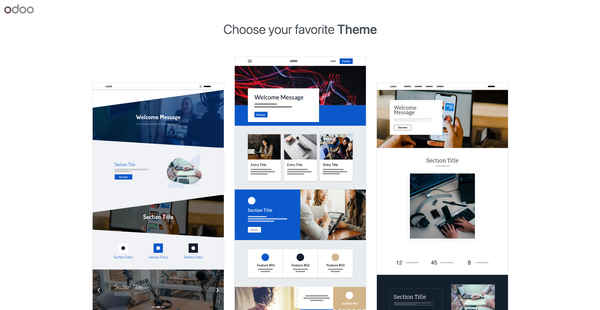23 Projects and Frameworks to Build Python Data Apps for Data Scientists and Business Developers
Table of Content
Python is a top choice for building data applications due to its versatility, ease of use, and strong ecosystem of libraries. For data scientists and business developers, Python offers powerful tools for data analysis, machine learning, and data visualization, making it ideal for tackling complex data science projects and delivering actionable insights.
Its extensive range of libraries, like Pandas, NumPy, and Matplotlib, simplifies data manipulation and visualization, while frameworks like Django and Flask enable rapid development of robust data-driven applications.
Whether you're developing business intelligence tools or creating custom data apps, these resources will help you leverage Python’s full potential to meet your data project needs. We've compiled this guide to equip you with the best tools for efficiently building, deploying, and scaling your data applications.
This guide highlights 23 essential Python projects and frameworks that can help data engineers streamline their workflows, enhance data processing capabilities, and build sophisticated applications.
1. Streamlit
Streamlit is an open-source, self-hosted Python platform designed to simplify the creation and sharing of web applications, particularly for machine learning and data science projects.
It allows users to transform data scripts into interactive web apps within minutes, without requiring extensive web development knowledge.
Streamlit is popular among data scientists and developers for its ease of use, making it ideal for quickly prototyping and deploying various applications, including LLMs apps, chatbots, data visualization tools, and scientific apps.
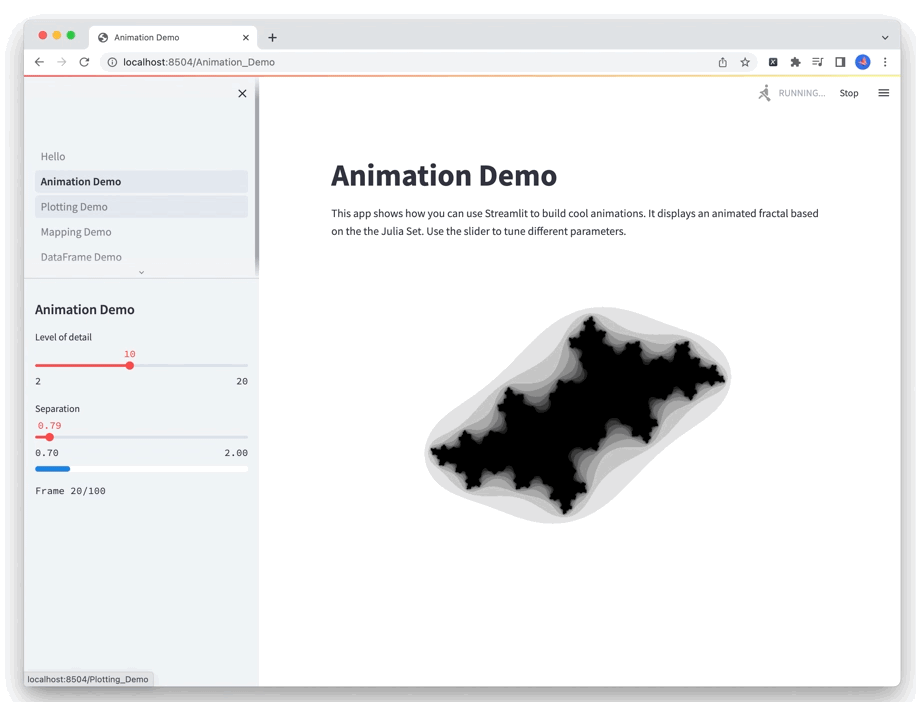
2. Mercury
Mercury is a free and open-source tool that transforms Python notebooks into interactive web applications by allowing you to add widgets directly within the notebook. With Mercury, you can enhance your notebooks with interactive elements and share them as web apps without needing frontend development experience.
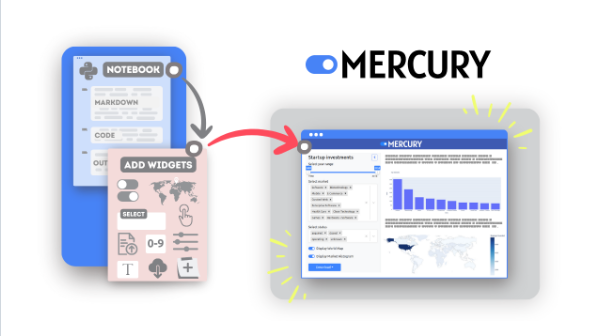
3. Panel
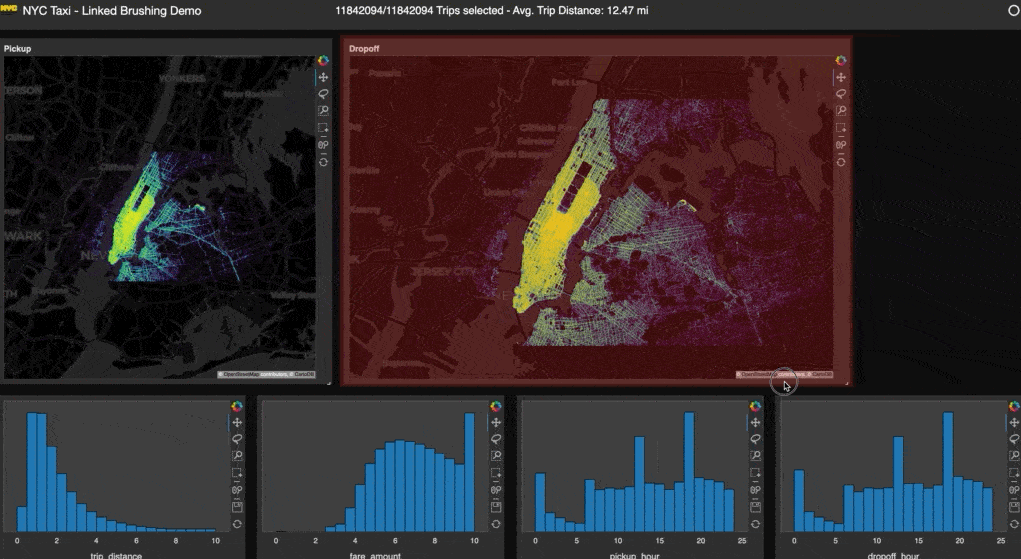
Panel is an open-source Python library designed to simplify the creation of powerful tools, dashboards, and complex applications using only Python. Embracing a "batteries-included" approach, Panel seamlessly integrates with the PyData ecosystem and provides access to advanced data tables and more.
It offers both high-level reactive APIs for quick development and lower-level callback-based APIs for building complex, multipage applications with rich interactivity.
As a part of the HoloViz ecosystem, Panel enables users to easily combine widgets, plots, tables, and other Python objects into custom analysis tools and interactive dashboards.
Whether you’re building simple exploratory tools or sophisticated applications, Panel provides the flexibility and connectivity needed to create robust, data-driven solutions.
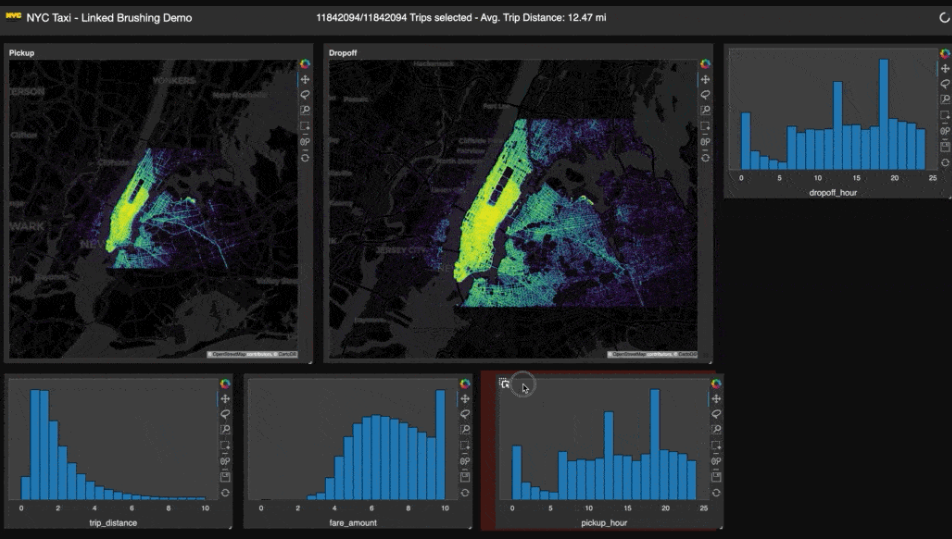
4. Taipy
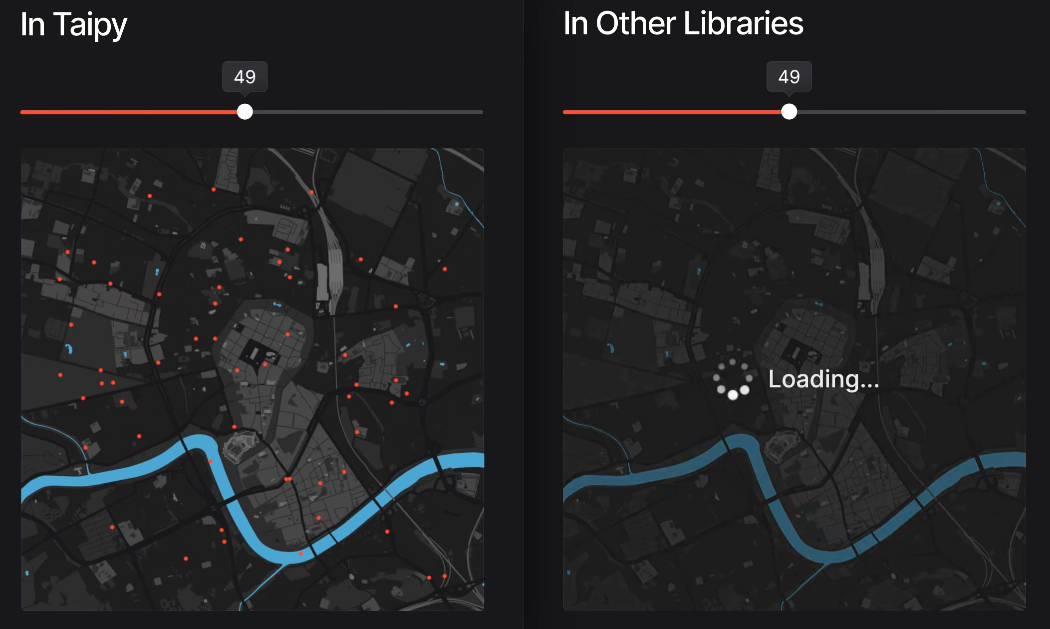
Taipy is a free and open-source framework that is designed for data scientists and machine learning engineers to build data & AI web applications.
5. Dash
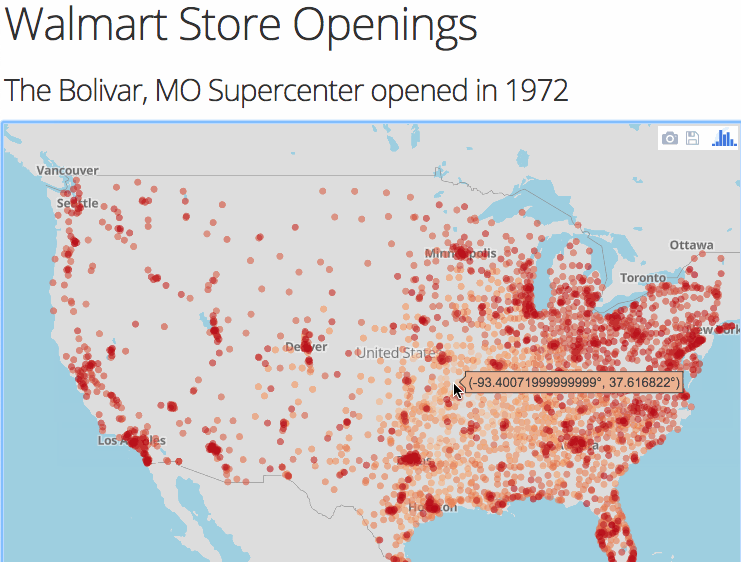
Dash is an open-source framework developed by Plotly that allows users to build interactive, web-based applications purely in Python. It streamlines the process of creating dashboards, data visualizations, and analytical web apps by providing a powerful yet user-friendly interface.
With Dash, you can integrate Python's vast ecosystem of data manipulation and visualization libraries, such as Pandas and Plotly, into your applications, enabling you to create highly interactive and customizable dashboards without needing to write any JavaScript, HTML, or CSS.
What sets Dash apart is its ability to render complex data visualizations in a web environment while maintaining a smooth user experience.
It supports a wide range of use cases, from real-time data monitoring to complex data analysis, making it an ideal choice for data scientists, analysts, and developers who want to present their insights through interactive web applications.
Dash’s flexibility and ease of use have made it a popular tool for organizations looking to build sophisticated data apps quickly and efficiently.
6. Writer Framework
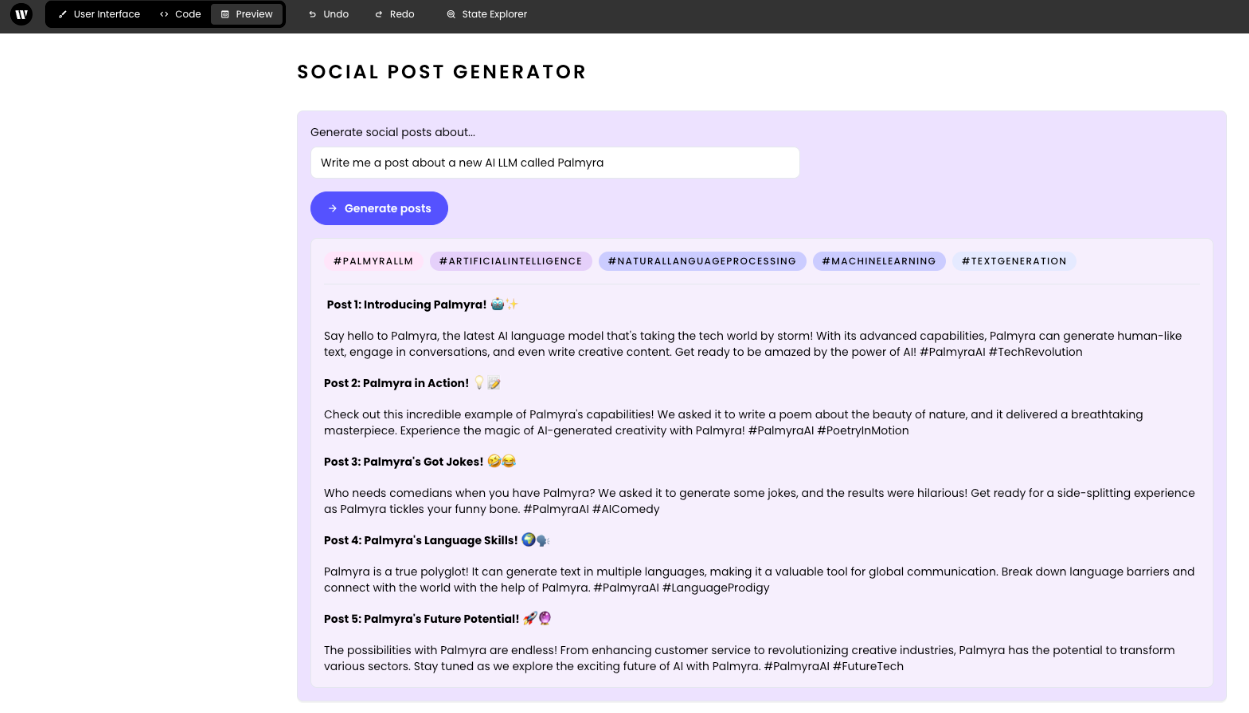
Writer Framework is an open-source framework for creating AI applications. Build user interfaces using a visual editor; write the backend code in Python.
Writer Framework is fast and flexible with a clean, easily-testable syntax. It provides separation of concerns between UI and business logic, enabling more complex applications.
7. Voilà
Voila is an open-source tool that allows you to convert Jupyter notebooks into standalone interactive web applications. It renders Jupyter notebooks as live dashboards, making it possible to share your data analysis, models, and visualizations without exposing the underlying code.
Voila supports all the rich interactive widgets from the ipywidgets library, enabling you to create interactive dashboards that can be used by non-technical users.
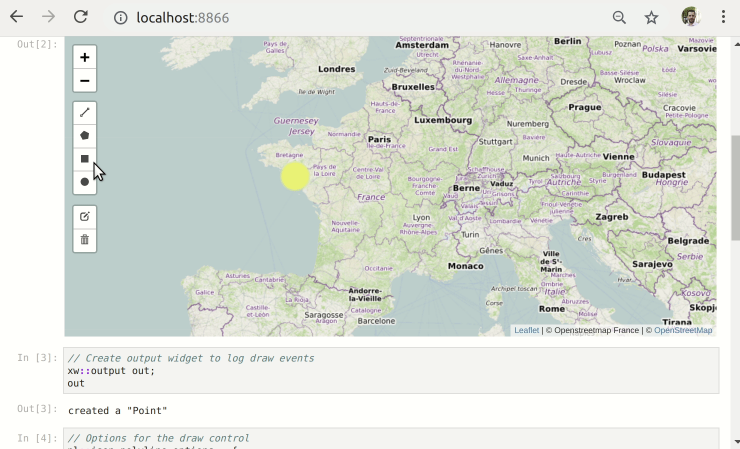
8. AutoViz
AutoViz is a powerful Python library designed to automate the process of visualizing data. It simplifies exploratory data analysis (EDA) by automatically generating a wide range of visualizations with minimal user input.
AutoViz is particularly useful for data scientists and analysts who need to quickly gain insights from their datasets without manually creating each plot.
AutoViz is a versatile and user-friendly tool for automating the data visualization process, making it an essential addition to any data scientist’s toolkit. Whether you’re dealing with small or large datasets, AutoViz helps you quickly uncover insights and understand your data with minimal effort.
Features
- Automated Visualization: AutoViz automatically generates visualizations for various data types, including numerical, categorical, and date-time variables, without requiring extensive configuration.
- Comprehensive EDA: The library performs a thorough exploratory data analysis, providing insights into the distribution, relationships, and outliers in the data.
- Handles Large Datasets: AutoViz efficiently handles large datasets, automatically sampling and visualizing the most relevant features.
- Customizable Plots: Users can customize the generated plots by specifying certain parameters or constraints, allowing for more tailored visualizations.
- Supports Various Plot Types: The library supports a wide range of plot types, including bar charts, histograms, scatter plots, box plots, correlation heatmaps, and more.
- Works with Pandas DataFrames: AutoViz seamlessly integrates with Pandas DataFrames, making it easy to visualize data from popular data sources.
- Minimal Code Required: With just one line of code, you can generate a comprehensive set of visualizations, making it extremely user-friendly and time-efficient.
- Data Cleaning and Preparation: AutoViz includes built-in data cleaning and preparation steps, such as handling missing values and encoding categorical variables, to ensure accurate and meaningful visualizations.
- Interactive Visualizations: The library generates interactive plots, allowing users to explore and drill down into the data directly from the visualizations.
9. Dara
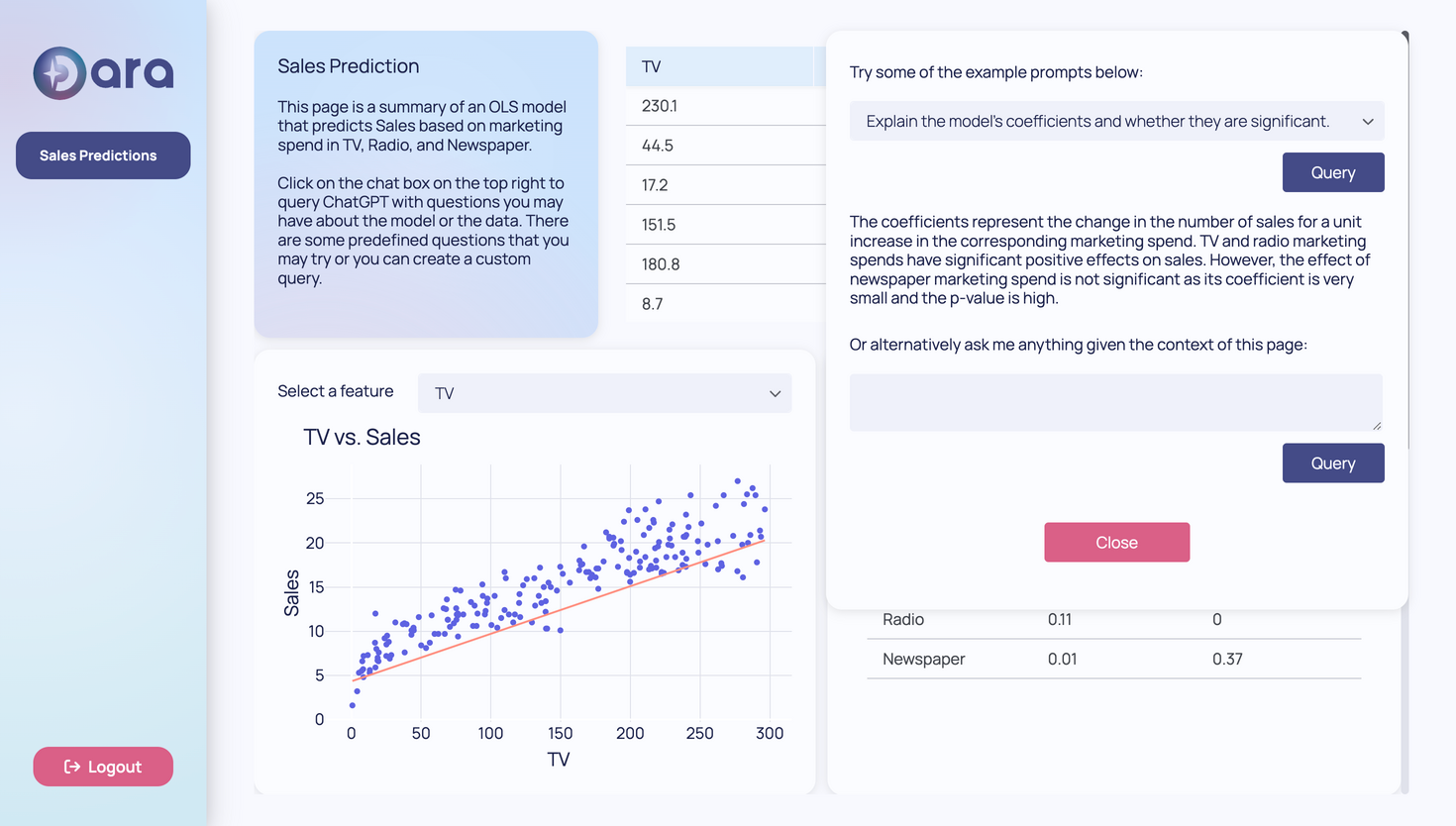
Dara is a dynamic application framework designed for creating interactive web apps with ease, all in pure Python.
10. Folium
Folium is a Python library that simplifies the process of creating interactive maps using the Leaflet.js JavaScript library. With Folium, you can easily generate and visualize maps directly in Python by combining various data types, including GeoJSON, Pandas DataFrames, and Shapefiles.
The library supports a wide range of features, such as adding markers, popups, and different layers, allowing for detailed and customizable map visualizations.
Folium is particularly useful for data scientists and developers looking to integrate geographic data into their Python projects and create visually appealing, interactive maps.
11. marimo
marimo is a reactive Python notebook: run a cell or interact with a UI element, and marimo automatically runs dependent cells (or marks them as stale), keeping code and outputs consistent. marimo notebooks are stored as pure Python, executable as scripts, and deployable as apps.
Features
- reactive: run a cell, and marimo automatically runs all dependent cells
- interactive: bind sliders, tables, plots, and more to Python — no callbacks required
- reproducible: no hidden state, deterministic execution
- executable: execute as a Python script, parametrized by CLI args
- shareable: deploy as an interactive web app, or run in the browser via WASM
- data-centric: built-in SQL support and data sources panel
- git-friendly: stored as
.pyfiles
12. DataStack
Datastack is an open-source framework that enables you to easily build real-time web apps, internal tools, dashboards, weekend projects, data entry forms, or prototypes using just Python—no frontend experience required.
13. Falcon
Falcon is a minimalist ASGI/WSGI framework for building mission-critical REST APIs and microservices, with a focus on reliability, correctness, and performance at scale.
When it comes to building HTTP APIs, other frameworks weigh you down with tons of dependencies and unnecessary abstractions. Falcon cuts to the chase with a clean design that embraces HTTP and the REST architectural style.
Falcon apps work with any WSGI or ASGI server, and run like a champ under CPython 3.8+ and PyPy 3.8+.
14. Ray
Ray is a unified framework for scaling AI and Python applications. Ray consists of a core distributed runtime and a set of AI Libraries for accelerating ML workloads.
15. Koheesio
Koheesio is a versatile framework that supports multiple implementations and works seamlessly with various data processing libraries or frameworks.
This ensures that Koheesio can handle any data processing task, regardless of the underlying technology or data scale.
16. nbconvert: Jupyter Notebook Conversion
The nbconvert tool, known as jupyter nbconvert, is a utility that allows you to convert Jupyter Notebook files (.ipynb) into various static formats using Jinja templates.
With nbconvert, you can transform your notebooks into formats such as HTML, LaTeX, PDF, Reveal.js presentations, Markdown (md), ReStructuredText (rst), and executable scripts.
This tool is useful for sharing, publishing, and presenting your notebook content in different formats while maintaining the original structure and code.
17. Datapane
Datapane is a Python library designed to streamline the creation of interactive reports directly from your scripts or notebooks.
It allows you to easily generate and share rich, interactive reports by programmatically wrapping various components such as Pandas DataFrames, plots from popular Python visualization libraries (e.g., Bokeh, Altair, Plotly, Folium), markdown text, and files like images and PDFs.
Additionally, Datapane supports interactive forms that can execute backend Python functions, making your reports not only informative but also interactive.
These reports can include advanced features like pages, tabs, and dropdowns, enhancing user experience and data exploration. Once created, Datapane reports can be exported as standalone HTML files, shared, or embedded into your applications, allowing users to engage with the data and visualizations directly within their environment.
Datapane simplifies the process of transforming data analysis into interactive, shareable reports with minimal effort.
18. Starlette
Starlette is a lightweight ASGI framework/toolkit, which is ideal for building async web services in Python.
Features
- A lightweight, low-complexity HTTP web framework.
- WebSocket support.
- In-process background tasks.
- Startup and shutdown events.
- Test client built on
httpx. - CORS, GZip, Static Files, Streaming responses.
- Session and Cookie support.
- 100% test coverage.
- 100% type annotated codebase.
- Few hard dependencies.
- Compatible with
asyncioandtriobackends. - Great overall performance against independent benchmarks.
19. Greppo
Greppo is an open-source Python framework that makes it easy to build applications. It provides a toolkit to quickly integrate data, algorithms, visualizations and UI for interactivity.
20. Prefect
Prefect is a workflow orchestration framework for building data pipelines in Python. It's the simplest way to elevate a script into an interactive workflow application. With Prefect, you can build resilient, dynamic workflows that react to the world around them and recover from unexpected changes.
22. Quart
Quart is an asynchronous Python web microframework designed to provide a flexible and modern approach to building web applications. Built on top of the popular Flask framework, Quart extends its capabilities by offering full support for asynchronous programming, making it well-suited for high-performance applications that require handling concurrent connections efficiently.
Quart’s asynchronous nature allows it to handle multiple tasks concurrently, making it an excellent choice for developers looking to build scalable, high-performance web applications in Python.
With Quart, developers can:
- Render and Serve HTML Templates: Easily create dynamic web pages using Jinja2 templates, just like in Flask.
- Write RESTful JSON APIs: Develop powerful APIs that handle JSON requests and responses, making it ideal for building backend services.
- Serve WebSockets: Handle real-time communication with clients using WebSockets, enabling interactive and responsive applications.
- Stream Request and Response Data: Efficiently manage large data streams, such as file uploads and downloads, without blocking the main thread.
- Support Various HTTP and WebSocket Protocols: Quart is highly versatile and can be used for a wide range of use cases, from simple web apps to complex real-time systems.
23. Gradio
Gradio is an open-source Python package that allows you to quickly build a demo or web application for your machine learning model, API, or any arbitrary Python function. You can then share a link to your demo or web application in just a few seconds using Gradio's built-in sharing features. No JavaScript, CSS, or web hosting experience needed!
